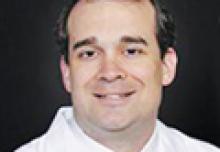SEATTLE—Vagal nerve stimulation (VNS) decreases the number of disabling seizures and increases alertness in children with Dravet syndrome, according to a retrospective analysis presented at the 68th Annual Meeting of the American Epilepsy Society. The treatment thus may benefit children whose seizures have failed to respond to several anticonvulsants and the ketogenic diet.
“The absence of neurocognitive side effects and drug interactions makes VNS an attractive treatment option, particularly for children with Dravet syndrome, who often have additional comorbidities,” said Stephen P. Fulton, MD, Assistant Professor of Pediatrics and Neurology at the University of Tennessee Health Science Center in Memphis. “VNS should be offered early on to children with Dravet syndrome and refractory seizures.”
Dr. Fulton and colleagues reviewed outpatient clinic and inpatient hospital records from their institution for the period from January 2005 to December 2012 to identify patients with Dravet syndrome who had had VNS implantation. The investigators examined the patients’ charts to identify their type of epilepsy, age at the time of seizure onset, seizure types, seizure frequency, medications used, response to VNS, and complications related to surgery or device replacement. Patients whose battery was approaching the end of its service were offered generator reimplantation if the family and doctor thought that the patients were benefiting from VNS. If the patient was not thought to be benefiting from VNS and the family requested removal of the device, the device was explanted after the battery was exhausted.
The researchers identified 12 patients whose VNS was implanted at their institution. Nine of these patients had at least 50% reduction in generalized tonic–clonic seizures. Two patients became seizure-free at one year after implantation. Four of the nine patients who achieved seizure reduction of at least 50% reported significant cognitive and speech improvements within six months of implantation.
The two patients who became seizure-free at one year had been on a rapid-cycling treatment regimen (ie, 7 s on and 0.2 or 0.3 min off) with output currents of 1.75 mA and 2 mA, respectively. Of the nine patients with seizure reduction of at least 50%, five used rapid cycling exclusively, one used intermediate cycling (ie, 30 s on and 1.8 or 3 min off) exclusively, two changed from rapid to intermediate cycling, and one changed from rapid to standard cycling (ie, 30s on and 5 min off) five years after implantation.
Three patients did not have marked improvement in their seizures. One of these children had improvement in absence seizures but worsening of generalized tonic–clonic seizures. One child had no improvement and no worsening. The third patient had significant improvement in seizure control but worsened behavioral difficulties.
—Erik Greb












